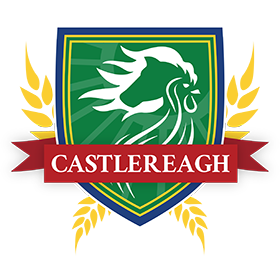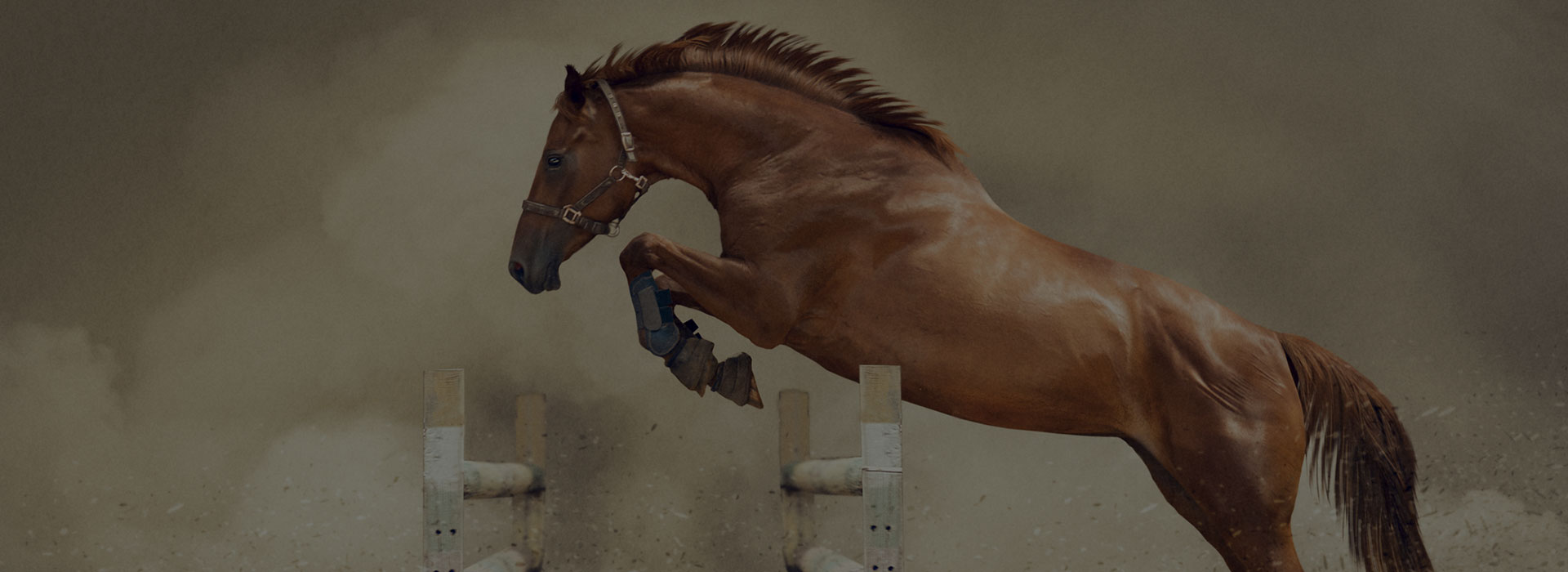15 Nov Everything You Need to Know About Feeding Lucerne Hay to Your Horse
Together with grass hay and oat chaff, Lucerne hay serves as a crucial source of necessary fibers and nutrients for horses. Lucerne hay is also known as alfalfa in some parts of the world- for example in North America. The term alfalfa is a Spanish adjustment of the Arabic word al-faṣfaṣa. Although all three sources of nourishment provide vitamins and minerals that are vital for the normal function of these animals, they do differ in the amount of energy they provide the horse with, as well as protein and calcium quantities.
And while some horse lovers praise Lucerne hay as an extremely valuable component in horse digestion, others avoid it at all costs. What is the truth behind this well-appreciated aliment? Continue reading as we will provide you with all details that you need to know about feeding alfalfa to your horse.
What is Lucerne hay?
Lucerne (lat. Medicago sativa) is a seasonal flowering plant from the legume family. It is mainly cultivated in warmer climates for hay production in the fields of Australia, and on other continents. It is extended in South America, Europe, Africa, and in regions such as the Middle East. The USA, as an individual country is a huge producer of Lucerne hay.
Lucerne has been cultivated since the times of ancient Rome and Greece. This legume — a leguminous plant (member of the pea family) — usually lives four to eight years. It can live up to twenty years depending on the climate. Lucerne can grow up to 1m in height. Given the fact that the root grows two to three meters in depth, alfalfa aids in providing the soil with nitrogen, which enhances its fertility. It also protects the soil from erosion. Overall, it is a valuable asset in the ecosystem. Lucerne is considered an insectary plant, which means that insects are bred here. Alfalfa accommodates insects that are parasitic and rapacious. By providing shelter to them, Lucerne can protect other plant species and crops. Also, alfalfa seeds require pollinators, once the fields are blooming. Western honey bees are the most common pollinators, however, they are not ideal. Nowadays, the alfalfa leafcutter bee is running pollination. These bees don’t produce honey and make no colonies. Therefore leafcutter bees are very efficient pollinators. Alkali bees are another species that are used for the same purpose. Some other types of bees have been introduced to perform the same activities worldwide.
The plant resembles a clover, especially while the plant is young. It is then when the trifoliate round-shape leaves predominate. As the plant grows more mature, the leaves change shape and become more elongated. When in bloom, a cluster of lilac flowers appear. They are then followed by fruits – each fruit contains 10 to 20 seeds. The plant can develop autotoxicity. This means it is quite difficult for the seed to grow in an actual stand of alfalfa. Therefore, it is recommended to switch between other crops and species such as wheat or corn.
As we mentioned, Lucerne is mainly used for feeding livestock- primarily cattle and horses. When alfalfa is used as hay in an animal’s diet, it is cut and baled. The transportation and storage of the baled hay is practical and convenient. Ideally, Lucerne should be cut for the first time just as it comes in the bud stage. The second cuttings should be performed right after the field starts blooming. It is then when the plant is richest in carbohydrates, which are a valuable source of the energy in the animal’s alimentation. After the plant is sown, it is left to dry naturally. Once dried, a tractor collects the hay in a bale by pulling a baler. Several different types of the bale are available. Which size one should go for, depends primarily on the usage. For example, petite animals and singular horses will benefit from small two-strings bales. On the other hand, immense bales that weigh from 500 kg up to 1000 kg will be good for large live-stock ranches.
Lucerne is, as we have mentioned, widely used in horse diet. Continue reading as we will explain the advantages, disadvantages of Lucerne, and the impact of this plant on the behavior of your horse.
Pros of Lucerne
It is a prime quality hay that is the source of vitamins A, K, E, and helps boost your horse’s protein and calcium levels. This type of horse food is also low in phosphorous. Lucerne is a valuable source of energy, and it can help keep your horse’s weight in check. Due to the level of proteins, it is very useful for feeding horses that are growing, horses in intense work, or mares used for breeding.
The fiber found in Lucerne is a great source of the energy. Some fibers are digestible and some are not. The higher the level of digestible fibers, the lower the level of the indigestible ones. In the case of Lucerne, this also means more energy. If you want to increase the weight of your horse, feeding it with Lucerne is a good idea. On the other hand, if your horse has a satisfactory weight, staying away from this particular type of hay would be wiser. Note that whenever you are making changes in the fiber source — by switching from grass to legume hay and vice-versa — the adjustment should be done gently and gradually. Why? It takes some time for the microbes inside a horse’s intestines to get used to alterations in their diet.
Lucerne is also rich in calcium, which can be both good and bad, depending on the other ingredients in your horse’s daily food intake. The level of calcium found in alfalfa surpasses the necessary daily requirements. Therefore it should be given in small doses. The presence of calcium is in direct connection with the presence of phosphorus. Be aware that the amount of phosphorus should always remain smaller than calcium from 1,5:1 to 3:1 – calcium:phosphorus.
Due to the level of proteins, alfalfa should be given to horses as a supplement to their diet. Generally speaking, protein-rich hay is said to be of better quality. However, a balanced diet should be given to the animal, as too much protein can harm horse. Not all horses should be fed this type of hay at all times either. You should be informed about when it’s the right time to add Lucerne to your horse’s diet.
You’re probably wondering when it’s the right time to feed Lucerne to your horse. In a nutshell, feeding Lucerne to your horse can be useful when:
- Your horse is breading or growing
- Your horse is in intense work
- Your horse is grazing oxalate pastures
- Your horse is an elderly one
- Ponies
Cons of Lucerne
With all these benefits, why has Lucerne become so infamous in the horsey people’s eyes? Though it makes for valuable forage when given to the right type of horses, you should be cautious. Some horses may be intolerant to the alfalfa. Others may start behaving oddly once fed with this kind of hay. Why does this happen? It is all about the balance in nutrition.
It is not commonly known that Lucerne is very low in sodium and exceptionally high in potassium Being a legume, Lucerne stores all its sodium in the root of the plant. Almost no sodium is stored in the stem of the plant. This means that when you feed Lucerne to your stock, an additional portion of sodium (in the form of salt for example) should be given as well.
If your horse is already given green grass in their day to day diet, you should think twice about feeding it with Lucerne. Green grass and grass hay are rich in potassium. Therefore, adding the Lucerne will increase potassium levels – they will skyrocket and this can cause an imbalance in the nutrition. As a result, your horse may become restricted from performing everyday regular activities.
An additional problem with Lucerne is the great level of phytoestrogen content. This can create an imbalance in the cycling of mares and later lead to other reproductive issues.
Mud-fever and the “sun-burning” effect are just some of the consequences of Lucerne being rich in photodynamic (fluorescing) pigments. These pigments, once in the bloodstream, are exposed to the UV rays of the Sun and can cause the depigmentation of sensitive horse skin in the nose and legs (just above the hoof). Keep in mind that Lucerne, together with ryegrass and clover can contribute to the photosensitivity of your animal as well.
Conclusion
Some horsey people think poorly about the Lucerne hay. This is due to the eventual side-effect it can cause if not fed properly to the horse. As we have mentioned, the benefits of giving alfalfa to your horse are great. When paying attention to their daily food requirements, Lucerne will cause no harm to your horse. What’s more, this supplement will provide a useful source of energy and proteins. Make sure to check the level of nutrients that your horse needs before feeding it with any kind of hay, not just Lucerne hay.

